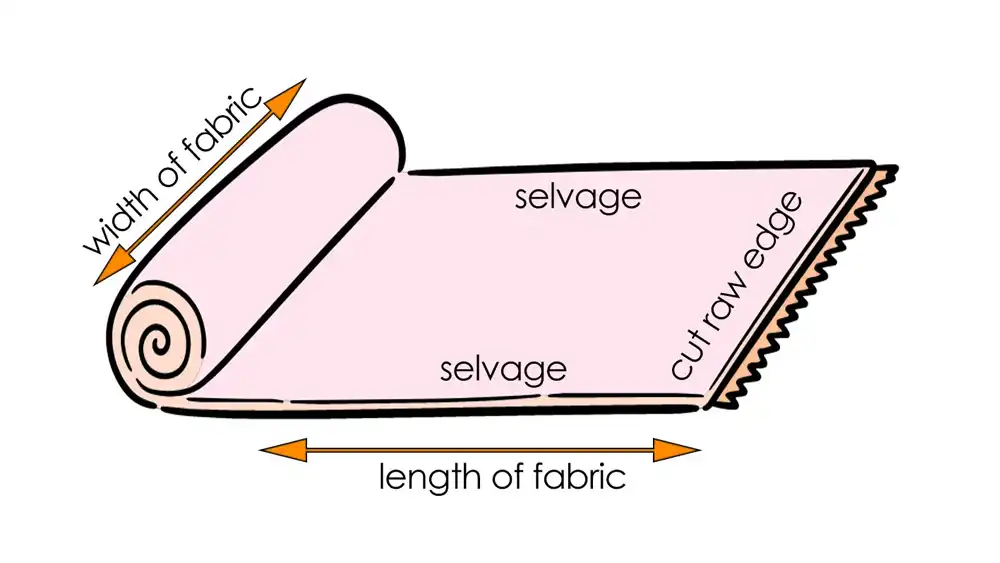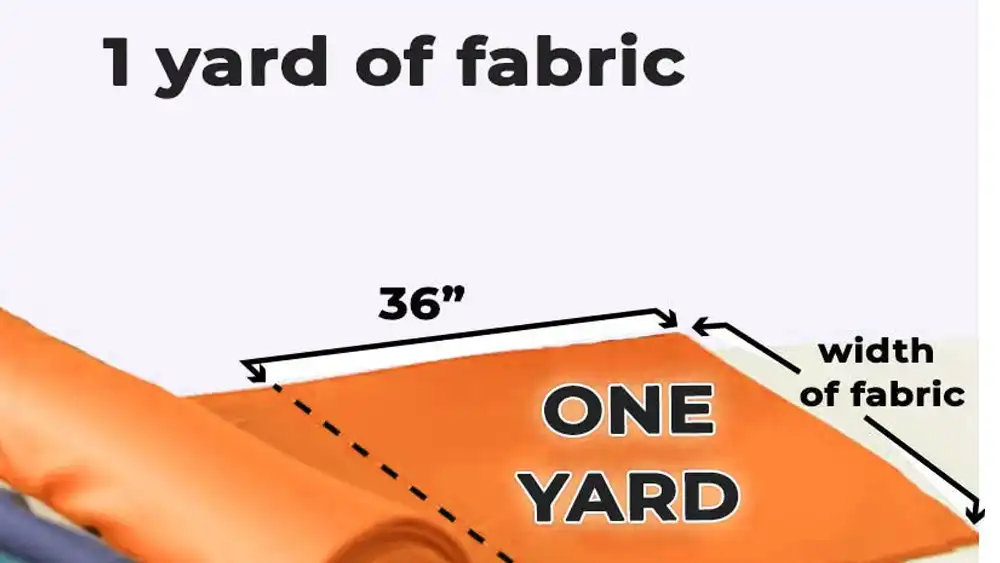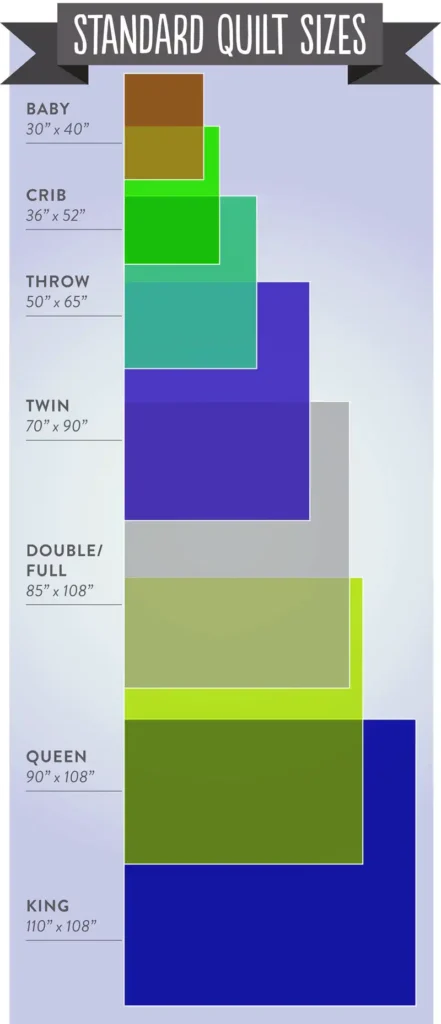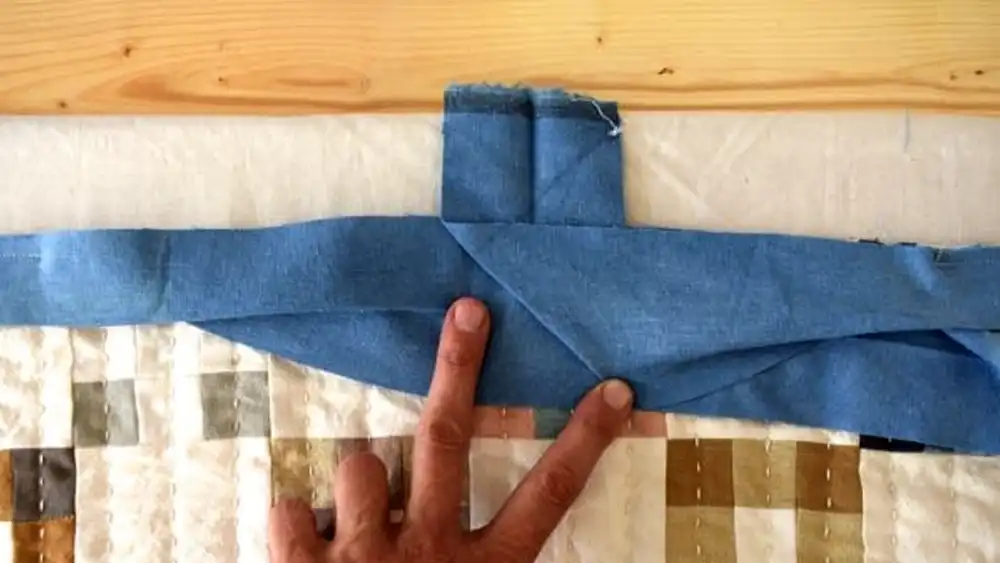Quilting is an age-old art form that transcends generations, captivating crafters with its intricate designs and timeless appeal. Central to this craft is the fabric itself, serving as the canvas upon which creativity flourishes.
Yet, amidst the vast array of fabrics available, quilters often find themselves pondering a crucial question: How wide is quilting fabric?
What Is Fabric Width

Fabric width refers to the measurement of fabric from one selvage edge to the other. The selvage edge is the tightly woven strip running along the length of the fabric, created during the manufacturing process to prevent fraying.
Knowing the fabric width is crucial for various sewing and crafting projects, including quilting, garment making, and home decor. It determines how much fabric is available for use and can influence design choices and construction methods.
How to Calculate Fabric Width

Calculating fabric width involves determining the measurement of fabric from selvage to selvage. Here’s how to do it:
Measure Selvage to Selvage: Lay out the fabric on a flat surface with the selvages aligned. The selvage is the tightly woven edge along the length of the fabric, typically marked with manufacturer information. Use a ruler or tape measure to measure the distance from one selvage edge to the other.
Record the Measurement: Once you’ve measured the width of the fabric from selvage to selvage, record the measurement in inches or centimeters. This measurement represents the fabric width and will help you determine how much fabric you have available for your project.
Consider Seam Allowances: Keep in mind any seam allowances you’ll need to account for when cutting or piecing the fabric for your project. Subtract the seam allowances from the fabric width measurement to calculate the usable width of fabric available for your project.
Plan Your Project: Use the calculated fabric width measurement to plan your quilting or sewing project. Consider the dimensions of your project and how the fabric width will impact the layout, design, and construction of your project.
By following these steps, you can accurately calculate fabric width and effectively plan your quilting or sewing projects to ensure optimal results.
Standard Quilting Fabric Widths: Exploring the Options

here’s a combined list of standard quilting fabric widths:
36 Inches: Commonly used for pre-cut bundles like fat quarters and charm packs, suitable for smaller quilting projects or when less fabric is needed.
44/45 Inches: The traditional width widely available and versatile, suitable for various quilting projects, from intricate patchwork to appliqué designs.
60 Inches: Offering more fabric than the standard width, suitable for larger projects or when extra fabric is needed for borders, sashing, or backing.
72 Inches: Less common but still available, providing even more fabric for larger quilts or projects without the need for piecing.
90 Inches: An intermediate option between standard and wider widths, suitable for medium-sized quilts or projects requiring larger pieces of fabric.
108 Inches: Commonly used for wide backing fabric, providing ample fabric for quilt backings, borders, or large projects without the need for piecing.
120 Inches: Widest option often used for seamless quilt backings or expansive designs without the need for joining multiple pieces.
These standard quilting fabric widths offer a range of options to accommodate different project sizes, design preferences, and construction methods, providing quilters with the flexibility they need to bring their creative visions to life.
How Wide Do I Cut Fabric for Quilt Binding

How wide to cut fabric for quilt binding?
When cutting fabric for quilt binding, the width typically ranges between 2 and 2.5 inches. This width allows for enough fabric to fold over the quilt edges and provides a sturdy binding when stitched in place.
Some quilters prefer a narrower binding for smaller quilts or projects with intricate designs, while others opt for a wider binding for added durability and visual impact. Ultimately, the choice of binding width depends on personal preference and the desired finish for your quilt.
How Wide is Cotton Quilting Fabric
When cutting fabric for quilt binding, the width typically ranges between 2 and 2.5 inches.
This width allows for enough fabric to fold over the quilt edges and provides a sturdy binding when stitched in place. Some quilters prefer a narrower binding for smaller quilts or projects with intricate designs, while others opt for a wider binding for added durability and visual impact. Ultimately, the choice of binding width depends on personal preference and the desired finish for your quilt.
How Wide is a Yard of Quilting Fabric
A yard of quilting fabric is typically 42 to 44 inches wide. This is a standard width in the quilting industry, although you might occasionally find variations.
How to Choose the Right Fabric Width
To choose the right fabric width for your project, follow these steps:
Assess Your Project Needs: Consider the size and complexity of your quilting project. Determine whether you’re working on a small, medium, or large quilt, and evaluate the intricacy of your design.
Calculate Fabric Requirements: Measure the dimensions of your quilt top, taking into account any borders or sashing you plan to add. Use these measurements to calculate the amount of fabric needed based on the chosen width.
Consider Design Elements: Evaluate the design elements of your quilt, such as block size, pattern complexity, and fabric placement. Determine if your design requires larger pieces of fabric that may be better accommodated by wider fabric widths.
Budget Considerations: Take your budget into account when selecting fabric width. Wider fabric widths may be more expensive than standard widths, so consider your budget constraints and weigh the cost against the benefits of wider fabric options.
Personal Preference: Consider your personal preferences and quilting style. Some quilters prefer the convenience of standard fabric widths, while others appreciate the versatility of wider options. Choose a width that aligns with your preferences and creative vision.
Evaluate Efficiency: Assess the efficiency of fabric usage based on the chosen width. Wider fabric widths may result in less fabric waste and fewer seam allowances, making them more efficient for certain projects.
Test Layouts: Experiment with different fabric layouts and arrangements to visualize how your quilt will look with the chosen width. This can help you make an informed decision and ensure that the fabric width complements your design.
By following these steps and considering factors such as project size, design complexity, budget, and personal preference, you can choose the right fabric width for your quilting project with confidence.
Tips for Working with Quilting Fabric
1. Precise Measurements:
Accurate measuring is key to optimizing fabric usage. Take care to calculate fabric requirements based on the chosen width and project dimensions.
2. Seam Allowances:
Adjust seam allowances accordingly when working with wider fabric widths. Be mindful of fabric waste and strive for efficient use of materials.
3. Strategic Layout:
Plan your quilt layout thoughtfully to minimize fabric waste and maximize visual impact. Experiment with different arrangements before cutting into your quilting fabric.
What is the Difference Between Quilting Cotton and Regular Cotton?
Quilting cotton and “regular” cotton often refer to the same fiber, but they differ significantly in their intended use, weave, and characteristics. Here’s a breakdown:
Quilting Cotton:
- Specifically designed for quilting projects.
- Typically a 100% cotton, woven with a tighter, plain weave (often referred to as broadcloth or poplin).
- Has a higher thread count than many general-purpose cotton fabrics, providing stability and minimizing fraying.
- Often pre-treated or mercerized to enhance colorfastness and reduce shrinkage.
- Comes in a vast array of prints and colors, catering to the needs of quilters.
- Designed to have minimal stretch.
Regular Cotton:
- A broad term encompassing various cotton fabrics used for apparel, home décor, and other purposes.
- Can include different weaves (jersey, flannel, canvas, etc.) and fiber blends (cotton-polyester, cotton-linen).
- Varies greatly in thread count, weight, and finish.
- May not be as colorfast or shrink-resistant as quilting cotton.
- Can have varying degrees of stretch depending on the weave.
In essence, quilting cotton is a specific type of cotton fabric engineered for the precision and durability required in quilting. “Regular” cotton refers to a much wider range of cotton fabrics with diverse properties.
Here are the differences between quilting cotton and regular cotton in the following
| Feature | Quilting Cotton | Regular Cotton |
|---|---|---|
| Purpose | Quilting, patchwork | Apparel, home décor, various uses |
| Fiber | Typically 100% cotton | 100% cotton, blends |
| Weave | Tight, plain weave (broadcloth, poplin) | Various weaves (jersey, flannel, canvas) |
| Thread Count | Higher | Variable |
| Finish | Often pre-treated, mercerized | Variable |
| Colorfastness | High | Variable |
| Shrinkage | Minimal | Variable |
| Stretch | minimal | variable |
Conclusion:
In the rich tapestry of quilting, fabric width plays a pivotal role in shaping creative outcomes. Whether opting for standard 44/45-inch widths or exploring the possibilities of wider fabric options, quilters are empowered to unleash their imagination and bring their visions to life.
By understanding the dimensions of quilting fabric and leveraging practical tips for efficiency, quilters can embark on their creative journey with confidence and clarity.
